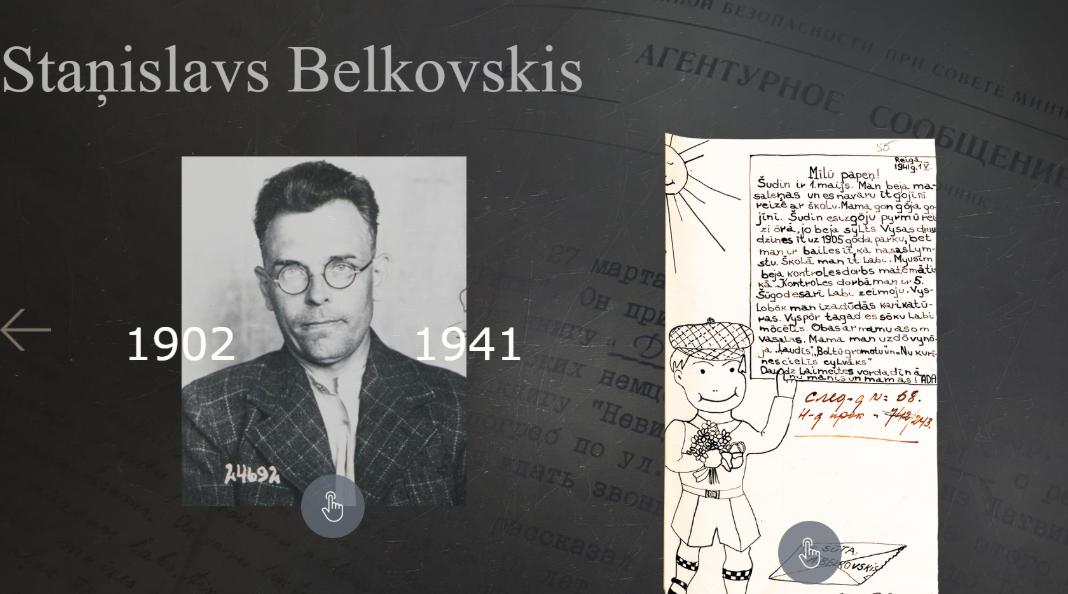The exhibit features letters found in the KGB's possession. In most cases it's not known whether the intended recipient ever received the letters, because they were intercepted as part of criminal proceedings.
Content curator and historian Inese Dreimane describes why the letters are so unique:
“In an absolute majority of criminal cases no personal correspondence fragments or indications haven't been preserved, if there ever were any. In these seven cases we've established that there was,” said the historian.
“Two of the letters were illegal attempts by the prisoners to sneak letters out of the jail to their families. But they were intercepted and added to the case as evidence, in this case of attempts to illegally contact freedom, family,” said Dreimane. Four of the letters were written by family who didn't know that their relative has been arrested. In one case a man's daughter writes to comrade Stalin asking him to be merciful and free her arrested father.
Occupation museum Deputy Director Līga Strazda spoke at the exhibit opening on the unique opportunity the virtual letters offer society.
“When historians make this sort of discovery, it usually takes a while for the information to be officially published. With this virtual exhibit technology has provided society the chance to view these revelations without having to wait for published information,” said Strazda.
The prisoners were imprisoned for various reasons, some for previous association with “alternative” communist organizations, while others had been officials in the Latvian police agency during Latvian independence.
As previously reported, the KGB Building was considered one of the most desirable addresses in Riga when construction was started in 1910. Designed by Aleksandrs Vanags, one of the most talented of Latvia's remarkable crop of young architects in the early years of the twentieth century and located in the heart of the city, no expense was spared to fill almost a whole city block with elegant apartments, shops and the very latest infrastructure including electric lifts.
Yet within thirty years it had become the least desirable address in the whole of Latvia – a place so awful that people refused even to refer to it by name.
The official address is 61 Brivibas street, but for generations the house has been known by a different name: 'Stura maja' or the 'Corner house.'
The name is euphemistically banal because a visit to the Corner House was anything but. The headquarters of the Soviet KGB – universally referred to as the 'Cheka' – from 1940, the apartments and shops were converted into offices administering a vast bureaucracy of oppression and dozens of cells, some large, some no bigger than a wardrobe. The pleasant residence of well-to-do burghers was transformed into a vast labyrinth of terror through which thousands of Latvians passed over half a century and from which dozens only emerged dead.


























